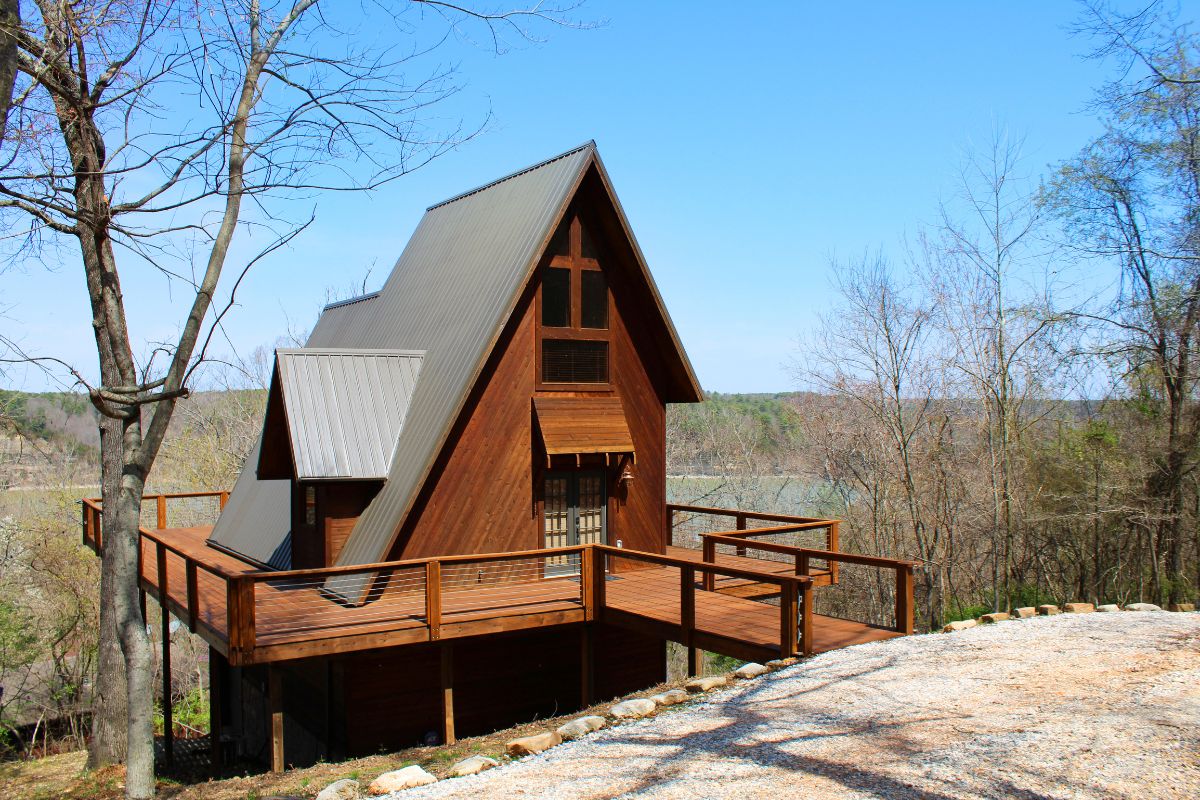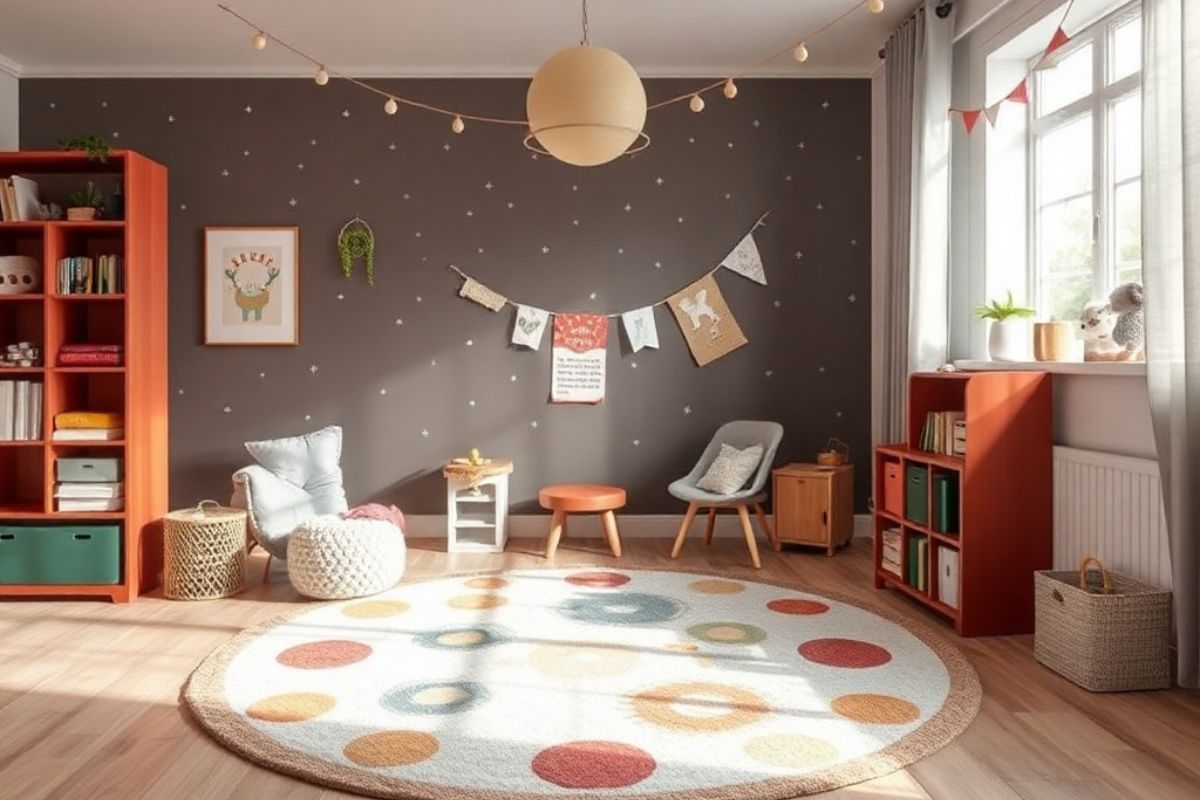Benefits of A-Frame Design
Why choose an A-frame design for your tiny house? First and foremost, A-frame structures are known for their simplicity and strength. The triangular shape distributes weight evenly, making the house sturdy and resilient against harsh weather conditions.
The steeply pitched roof also allows snow and rain to slide off easily, reducing maintenance.
In addition to durability, A-frame houses have a unique aesthetic appeal. Their minimalist design offers a modern yet classic look that stands out in any setting, whether it's nestled in a forest or perched by a lakeside.
You'll find that the high ceilings create an airy and spacious feeling, despite the compact footprint.
Another key benefit is cost-effectiveness. Building an A-frame tiny house typically requires fewer materials and less labor compared to traditional homes. This can meaningfully reduce your overall expenses, making it an attractive option if you're on a budget.
Energy efficiency is another advantage. The A-frame's shape naturally promotes better insulation and ventilation, helping you save on heating and cooling costs.
With fewer walls and more open space, it's easier to maintain a comfortable temperature year-round.
A-Frame Cabin Tiny House Plan
Check out our tiny house plan of an A-Frame Cabin:
.png)
Space Optimization Techniques
Maximizing space in an A-frame tiny house requires clever design strategies that make the most of every square foot.
Start by incorporating multifunctional furniture. A sofa that turns into a bed or a table with built-in storage can save you tons of space. Wall-mounted foldable desks and dining tables are also great options for maintaining an open floor plan.
Next, consider vertical storage solutions. Use shelves, hooks, and cabinets that go all the way up to the ceiling. This not only frees up floor space but also keeps your living area organized.
Don't forget the often-overlooked areas like the space under stairs, which can be transformed into drawers or a cozy reading nook.
Opt for sliding doors instead of traditional swing doors to save space and add a modern touch.
In terms of the kitchen, choose compact yet efficient appliances. A two-burner stove and a smaller fridge can provide the functionality you need without taking up unnecessary space.
Lastly, make use of natural light. Large windows and skylights can make your tiny house feel more spacious and inviting.
Sustainable Building Materials
When building your A-frame tiny house, opting for sustainable building materials is a smart and eco-friendly choice. Choosing materials like reclaimed wood, bamboo, and recycled metal not only reduces your carbon footprint but also adds unique character to your home.
Reclaimed wood is a fantastic option. It's durable, environmentally friendly, and often comes with a history that adds charm. Using this wood for your floors, walls, or even furniture can give your tiny house a rustic yet modern feel.
Bamboo is another excellent sustainable material. It's incredibly fast-growing and renewable, making it perfect for flooring or cabinetry.
Plus, its natural finish can create a warm, inviting atmosphere in your tiny space.
Recycled metal is also worth considering. It's sturdy, long-lasting, and can be used in various applications, from roofing to structural elements.
Using recycled metal not only minimizes waste but also gives your home a sleek, modern edge.
Modern Interior Ideas
Incorporating modern interior ideas into your A-frame tiny house can transform the compact space into a stylish, functional haven. Start by embracing minimalism. Opt for multi-functional furniture like a sofa that converts into a bed or a coffee table with built-in storage. This maximizes the small space and keeps it clutter-free.
Lighting plays a vital role in modern design. Use a mix of natural light and sleek fixtures. Large windows not only let in ample sunlight but also make the space feel larger. Choose LED lighting with dimmable options to create various moods.
Color schemes should be neutral and harmonious. Think whites, greys, and soft pastels to open up the area visually. Accents like throw pillows or rugs in bold colors can add a pop of personality without overwhelming the space.
Incorporate smart home technology. Install a smart thermostat, automated lighting, and voice-activated assistants to improve convenience. These features make your tiny house modern and efficient.
Lastly, don't forget the decor. Opt for wall-mounted shelves to free up floor space and add plants to bring a touch of nature indoors.
With these modern interior ideas, your A-frame tiny house will be both chic and practical.
Essential Features to Include
Creating a sanctuary within your A-frame tiny house hinges on the inclusion of vital features that blend practicality with comfort.
First, maximize your vertical space. Install lofts that double as sleeping areas or storage zones. This frees up your main living area, making it feel more spacious.
Next, focus on multi-functional furniture. A sofa that converts into a bed or a dining table that folds into the wall can save precious space. Built-in storage solutions, like under-stair drawers or hidden compartments, help keep your tiny house clutter-free.
Lighting is essential. Use large windows and skylights to flood the space with natural light, making it feel larger and more inviting. For evenings, opt for energy-efficient LED lighting that provides ample illumination without consuming too much power.
In the kitchen, prioritize compact appliances and efficient layouts. A two-burner stove, a small fridge, and a combined microwave-oven can meet your needs without overwhelming the space.
Lastly, don't skimp on insulation and ventilation. Proper insulation guarantees your tiny house stays cozy in winter and cool in summer. Good ventilation prevents moisture buildup and keeps the air fresh.
Prioritizing these features will make your A-frame tiny house a comfortable and functional retreat.
DIY Vs. Professional Builds
Ever wondered whether building your A-frame tiny house yourself or hiring professionals is the better route?
Deciding between a DIY project and a professional build depends on your skills, time, and goals.
If you're handy with tools and enjoy tackling projects, a DIY build might be right up your alley. Doing it yourself allows for total customization, letting your creativity shine through every detail. You'll also gain a sense of accomplishment and potentially save on labor costs.
Nevertheless, DIY builds require significant time and knowledge. Mistakes can be costly, and without proper expertise, you might run into structural or safety issues.
On the other hand, hiring professionals guarantees a high-quality, code-compliant build. Experts bring experience and efficiency, often completing projects faster than a DIY approach.
They handle permits, materials, and unforeseen challenges, offering peace of mind. But, professional builds come with higher upfront costs and less flexibility in design changes.
Weighing these options, consider your confidence in construction skills, available time, and willingness to handle potential setbacks.
Whether you choose DIY or professional help, both paths lead to the rewarding experience of living in your own A-frame tiny house.
Cost and Budgeting Tips
When planning your A-frame tiny house, understanding costs and budgeting tips is crucial for a smooth process. First, establish a clear budget. This helps you make informed decisions about materials, labor, and unexpected expenses. A-frame tiny houses can range from $15,000 to $50,000, depending on size and finishes.
Prioritize your spending on essentials like structural integrity, insulation, and utilities. Skimping here can lead to costly repairs down the road. Consider cost-effective yet durable materials. For example, reclaimed wood can add charm while saving money.
Labor costs can be a significant part of your budget. If you're handy, opting for a DIY approach can save thousands. Nevertheless, don't hesitate to hire professionals for tasks beyond your skillset, like electrical work. This guarantees safety and compliance with building codes.
Keep a contingency fund, usually 10-15% of the total budget, for unexpected expenses. These could include weather delays or material price increases.
Lastly, track every expense. Use a budgeting app or spreadsheet to monitor costs in real-time. This helps you stay on track and make adjustments as needed.
Conclusion
Incorporating A-Frame tiny house plans into your lifestyle offers compact living with a modern twist. You'll benefit from space optimization techniques, sustainable materials, and sleek interior designs. Whether you choose a DIY approach or hire professionals, these homes promise efficiency and eco-friendliness. Remember to budget wisely and include essential features to improve functionality. Welcome the charm and practicality of A-Frame living—it's a smart, stylish choice for today's eco-conscious homeowners.






Share: